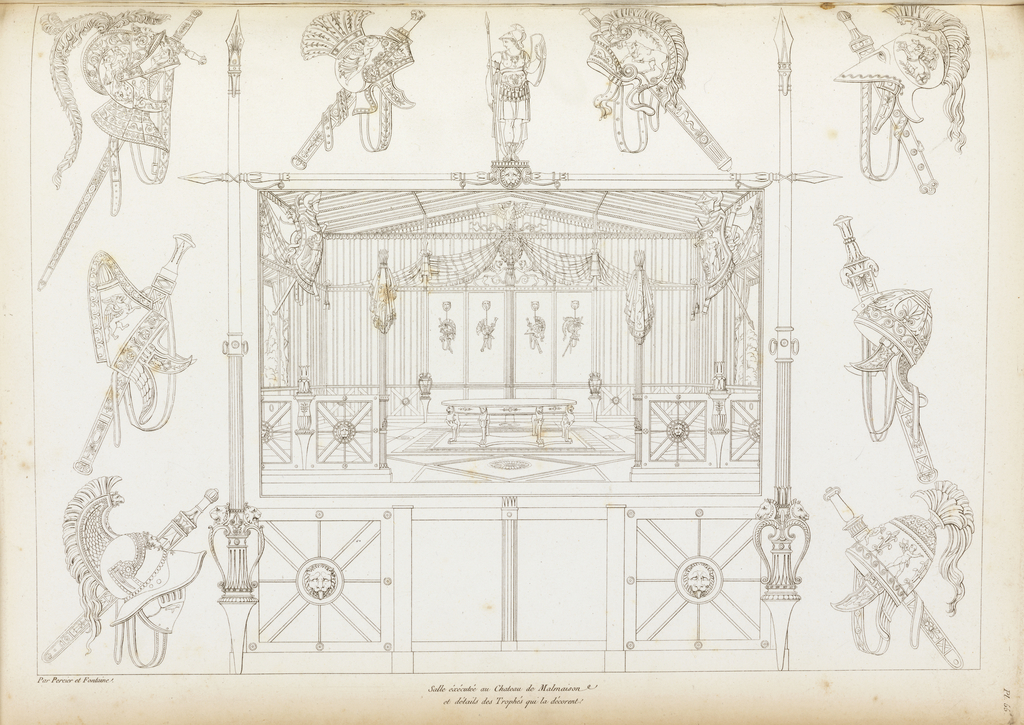This etching presents a view of the Salle du Conseil (Council chamber) at Château de Malmaison, the residence of Napoleon Bonaparte and his wife, Joséphine, from 1799. It is published as plate 55 in Recueil de decorations intérieures (Collection of Interior Decorations) an ornament publication produced by Pierre-François-Léonard Fontaine (1762–1853), Napoleon’s chief architect, and his partner, Charles Percier (1764-1838). Percier and Fontaine are credited with disseminating the Empire style during the Napoleonic era, and advising the First Consul on architecture, design, and urban planning.
Percier and Fontaine’s etching offers a composite view that fuses the rendering of the military tent themed Council chamber with warlike trophies and fantastical helmet designs. In the etching, interlocking spears frame the architectural interior, and Minerva, fully clad in her armor, perches in the center of the rigid architectural interior, thus doubly reinforcing the military theme. At the very center of the room is a round table supported by lions, a type of furniture design that appropriated motifs from classical antiquity that were unearthed in the previous century through excavations at Pompeii and Herculaneum. However, ornamental details in the interior, such as fasces (rods carried by ancient Roman lictors as a symbol of justice) take their cues from the arts of the Roman Empire.
The tented interior and the war-themed decorations are reflections of the Napoleonic military moment. Percier and Fontaine claimed that this particular room was built in ten days, in order not to disrupt Bonaparte’s frequent journeys. The designers further describe in their publication that they found it “appropriate to adopt […] the form of a tent supported by pikes, fasces and standards, between which were hung ensembles of arms recalling the most famous warlike peoples of the globe.”
The Napoleonic campaigns influenced other aspects of decorative arts during this period, such as the invention of collapsible campaign furniture. Tented interiors are echoed in other parts of Malmaison, including Bonaparte’s bedroom, and later in Empress Josephine’s bedroom. Still, tented interiors have earlier eighteenth-century precedents as the master bedroom for Comte d’Artois at the François-Joseph Bélanger-designed Château de Bagatelle (1777).
This etching from Percier and Fontaine’s Recueil offers a glimpse of the artistic style that flourished during the Napoleonic period, which fused classical and eighteenth-century precedents with decorative motifs that responded to the contemporaneous cultural and political moment. Ornament and architecture prints such as this aided the dissemination and evolution of the Empire style throughout France in the early nineteenth-century.
Cabelle Ahn is a graduate intern in the Department of Drawings, Prints and Graphic Design at the Cooper Hewitt, Smithsonian Design Museum. She received her MA in Art History from the Courtauld Institute of Art and is currently studying eighteenth century decorative arts at the Bard Graduate Center.
